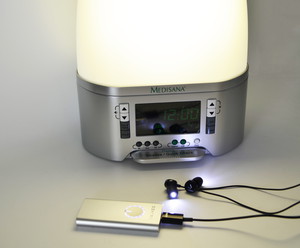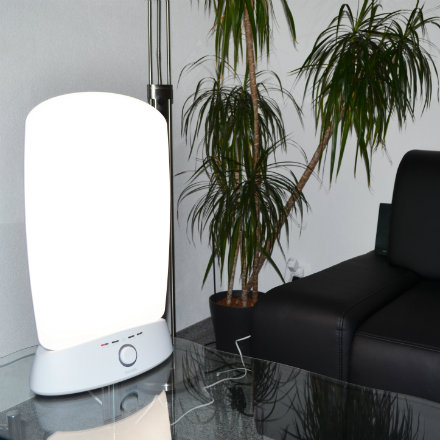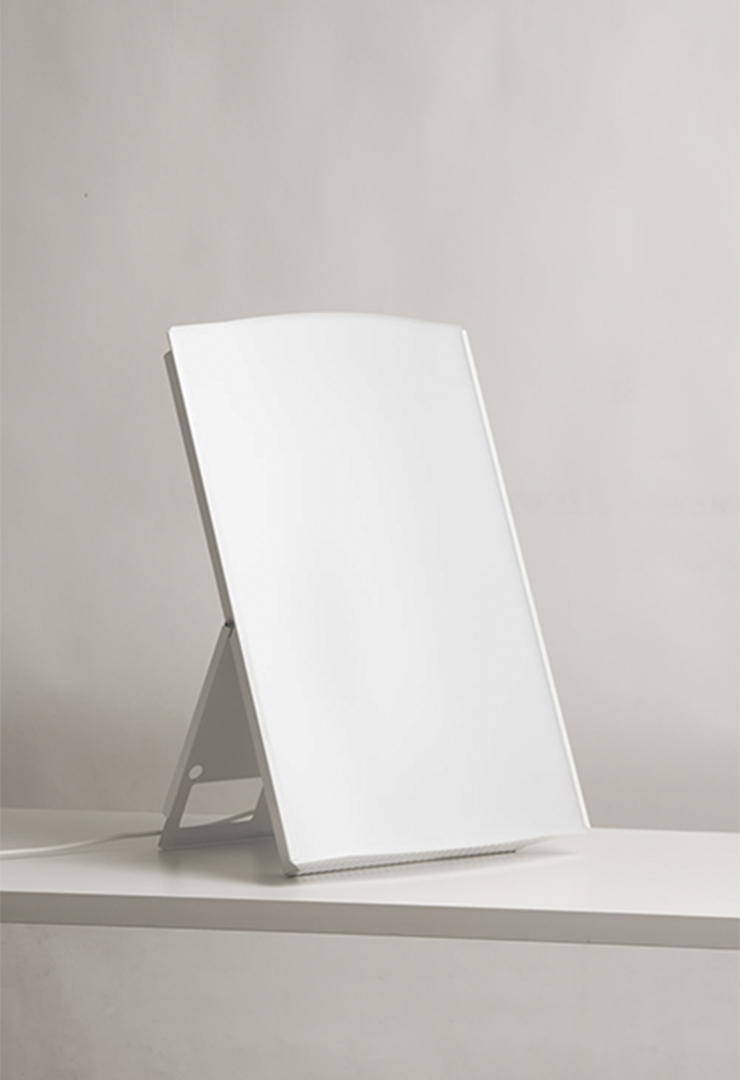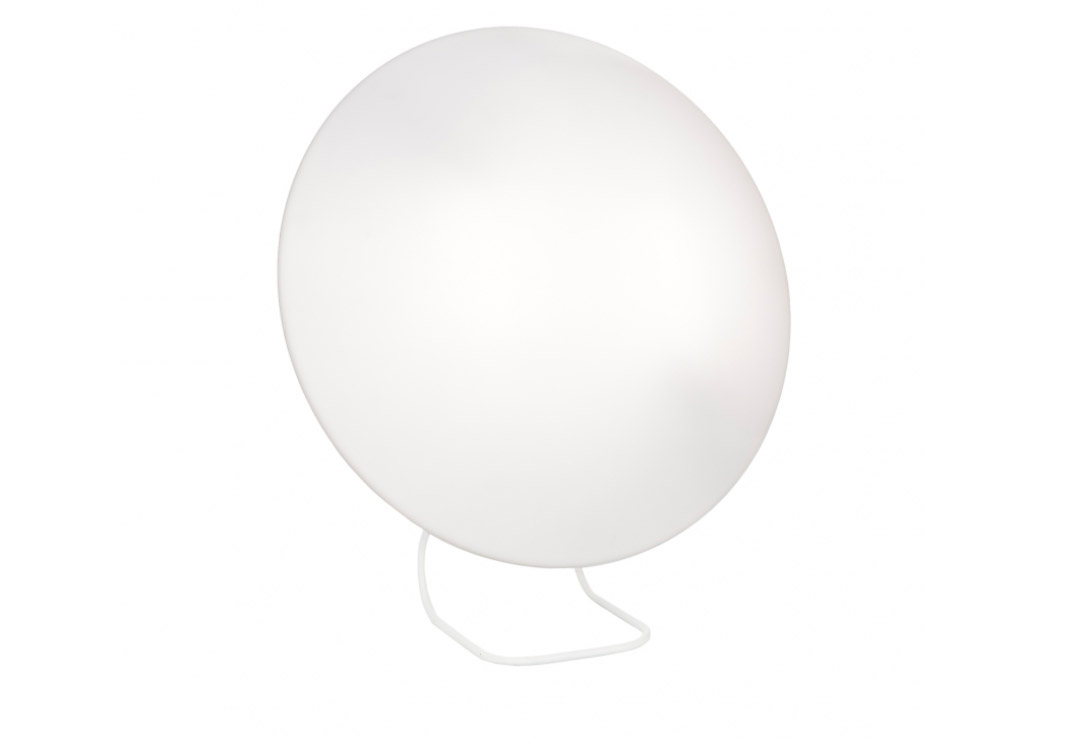The term jet lag is used when the aircraft travels so quickly that the body rhythm of our body is practically lagging behind. The word 'lag' also appears in 'time lag', which is also an accurate description. Other names for jet lag exist, such as dysrhythmia or desynchronization of the internal clock with the external time.
It was at the end of the 50s that employers started to worry about the wellbeing of their pilots, stewards, or businesspersons and athletes who regularly needed to fly over several time zones. Yet, it still took time until the research on the exact effects on the circadian rhythm started.
Which role does the inner clock play, and what are the external factors?
Our body is set to a 24-hour rhythm. If the body sensors perceive different, completely unfamiliar day- and night-impressions, experiencing a different activity and resting rhythm, the body will react with high sensitivity. Jet lag is a good example. Crossing at least two time zones with a flight will mess up the circadian clock of the body. The effects may be sleeping problems due to the time zone change. But the symptoms can also manifest themselves through increased daytime sleepiness, loss of energy and performance, as well as digestive problems.
Research has shown that our body indeed has its own internal clock that regulates the circadian rhythm. Even without signals from outside that would indicate the time of the day, our body is able to live according to an approximate 24-hour rhythm and set its sleeping and waking rhythm, as well as the body temperature and other functions according to it. However, there are surrounding factors - among them especially daylight - that have a very strong effect on this internal clock.
Bright light of an intensity of more than 2000 Lux has such a strong effect because the light information reaches directly the SCN (suprachiasmatic nucleus) that is located in the brain. This center of neurons is connected to many other brain areas that are responsible for the regulation of body temperature, the production of the sleep hormone melatonin and other hormones, as well as many other functions.
Wellnessproducts > Jet lag
When jet lag causes the inner rhythm to lag behindOne of the main causes of jet lag is traveling by airplane and crossing several time zones. This causes the body to experience a desynchronization of time, since the internal clock of the body is no longer synchronized with the external day and night rhythm. After a period of adjustment, the symptoms will disappear. In the meantime, however, you would have to deal with daytime fatigue, digestive problems, mood swings and sleep problems.
 Differences when traveling east or westThese external factors have quite some power. This explains why differences between the external daytime and our inner clock come with such negative consequences. We can feel it clearly, when it comes to jet lag. An example will illustrate how the rhythm will be confused: Let's suppose that we are flying in summer at 7 p.m. from France to Montreal in Canada. After a seven and a half hour flight, our internal clock would expect it to be very late nighttime. Instead, the body will be faced with 1 p.m. local time in Montreal. Upon arrival, it would signalize a legitimate need for sleep. However, it still has to cope with half a day until it is finally dark and time to go to sleep.
The problem is not only that the sleep pattern is changing. The usual meal times are affected too. Depending on whether you manage to rapidly adapt to the new local time, to stay awake during the day and to only sleep at night, you will manage to re-introduce regular meals again. This is because basically our whole metabolism is subject to our biological clock. And the circadian rhythm - the sleep-wake rhythm that follows an approximate rhythm of 24-hours a day - plays an important role. One example will illustrate the variations of the metabolic processes during different times of the day: for example, alcohol consumption in the morning harms the body much more than drinking alcohol in the evening. Another example: the body temperature rises during the day and decreases during the night. It is the nature of humans to be active during the day. Therefore, we cannot simply turn the night into day, without having to face biomechanical consequences. Scientists estimate that a jet lag is able to mess up more than 50 psychological and physiological systems in the body. Not everyone reacts to jet lag the same way. The symptoms appear also much stronger with growing age. Some manage to adapt faster to the new local time, others need more time or experience stronger symptoms. It also makes a difference whether one is crossing time zones to the east or to the west. It is harder for the body to cope with a shortened day on a flight going east than with an extended day on a flight to the west. In the first case, it would be necessary to force the body to sleep at a time that it is unusual for it. In the second case, it is easier to create once a lack of sleep and then to catch up with sleep during the following days. In any case, messing up the circadian rhythm is quite a challenge for various bodily functions that are regulated by it. For example, the blood pressure, the heart rate and the secretion of certain hormones are also subject to certain fluctuations during the day. No wonder if messing them up affects the body in various ways. Do's and don'ts when it comes to jet lag Fortunately, there are a few ways to interact with our internal circadian rhythm. They also help to get rid of jet lag more quickly or to prevent it in the first place as much as possible. Jet lag has the advantage of usually being only a single shift of time and rhythm, unless you need to cross different time zones multiple times during a short period. If this is not the case, you will arrive in the new time zone, and your body will face a change in the day-night cycle, that after all remains constant during the following days. The new impulses will act permanently and reliably on your body, so that it can clearly adapt to the new day-night rhythm. There will not be a remedy for an immediate adjustment, because the internal body clock will always need time for the change (approx. one day per time zone). Yet there are a few tips on how to better cope with jet lag. Generally, it is best to expose the body to the new surrounding factors as much as possible: This applies to light exposure, social activities and meals. In the beginning, it may cost you a lot of effort and strength; however, it may significantly improve the acclimatization process. Since unusual fatigue and a lack of concentration may be expected, you should be aware of possible risks and avoid activities that require a lot of attention or concentration. It can also help to build up a sleep deficit during the flight or upon arriving. This can help the body clock to adjust more quickly. Another tip: Set your watch to the destination time already on the plane and try to take the meals according to the new time. In the hours before sleeping, avoid drinks with stimulating effects and meals that are hard to digest. One possibility is also to take sleeping pills with medium effect on the first two nights. If it is possible, you can begin adjusting to the new time already before the flight. This requires slight changes of the sleeping and activity hours, but also the meals that should possibly be enjoyed according to the new time. It is important to note in which direction you will fly. If you will fly to the west, try to go to bed later than usual and get up later on the days before departure. If you will fly to the east, you should try to go to sleep earlier and to get up earlier. How does light therapy help with jet lag? Light therapy has been successful with treating symptoms of winter depression. It can also be used for curing sleep problems and offers an easy way for a specific influence on the internal body clock and for adjusting the circadian rhythm to the new requirements. If, on the days before the flight, you attempt to get up earlier, you can use light therapy in the morning for half an hour. When it comes to flights to the west, light therapy should be applied in the evening. This natural kind of therapy is also beneficial in case there is no possibility to expose the body to daylight once you arrive at your destination. Light therapy plays an important role in jet lag research. It has been shown that light can significantly reduce the jet lag duration. After all, light is able to affect the melatonin secretion of the body. Melatonin is also called 'dark hormone' and is created by the body when it is surrounded by darkness. The hormone helps to set the "sleep program" for the body. It is relatively easy to measure melatonin in the body and therefore, to drive conclusions over the 'state of the internal clock'. For example, melatonin can be found in saliva, blood plasma, urine and in breast milk. The melatonin release is the highest in the early morning hours before waking up. The release of the hormone is controlled by the circadian clock. However, darkness is an important factor for it. Strong light pulses are able to suppress the release. In order to suppress melatonin secretion, relatively bright light is needed with an intensity of more than 2500 lux. The time of day when the light will be applied plays a role as well. White light with all color spectrums would be ideal. However, it should have little or no infrared, ultraviolet or extreme blue components. With a light intensity of 2500 lux, the treatment can last up to two hours. If 10,000 Lux are available, already 30-40 minutes of light exposure will be sufficient. It is not necessary to look directly at the light source. The best would be light therapy lamps that administer the light from an inclined angle from above. This way, it would be easier to read during treatment or to follow other sedentary activities. When it comes to light therapy treatment, it is important to stick to regular times. Overall, you can perform light therapy easily at home or in the office, on regular and daily basis. Such a treatment can even be shorter and enjoyed on the go, for example, when using a device such as the Valkee bright light unit. Light therapy with the Valkee means sending the light information not through the eyes, but through the ears. For this purpose, the device is equipped with earplugs and can simply be carried in your pocket. If necessary, you should adjust the time of the light therapy, since there may be circumstances in which light therapy in the evening may lead to sleeping problems, or light therapy in the morning make you wake up too early. You should pay attention to these signals and slightly modify the treatment times in order to change the effect. Taking light therapy already with you in your luggage Classical light therapy lamps have been around for approximately 25 years now. They are used for sending the light information through the eyes to the brain. The main differences of the available light therapy lamps can be found in their performance (intensity of light in lux), their size and also in the color temperature of the light. The more powerful the lamp, the shorter the treatment will take and you don't need to place the device very close to the face. However, such powerful devices are usually quite large and heavy, and it will be difficult to take them with you in your luggage. In addition to those traditional light therapy devices that act as daylight lamps and need to be placed in front of the face and turned on at the treatment times, you can find also an alternative way that enables greater mobility. For example the Valkee bright light headset that provides transcranial light therapy. This method is also based on the natural effect of light, but specifically on the discovery that light not only reaches the brain through the eyes. Light sensitive photoreceptors that can be reached via the ear canal exist. The Valkee emerged from research at the University of Oulu in northern Finland and was the object of numerous studies during several years, which proved that light therapy can be effective through the ear canal. When using the Valkee device, treatments of only 9-12 minutes a day are sufficient. Furthermore, the device can be taken with you everywhere thanks to the size and shape of the device that resembles an MP3 player. This resolves the problem of having to look for a light therapy device upon arrival if you would like to treat your jet lag symptoms while being in a foreign country. The research of Valkee dealt not only with the use of the device for treating symptoms of winter depression, but also specifically with the question whether it would be suitable for treating jet lag. The result: the innovative light therapy device proved being successful in relieving jet lag symptoms too. 55 healthy volunteers participated in the study. They flew from Finland to North America and stayed there for at least one week. This way the body was able to adjust to the new time zone. Then they flew back to Finland. Upon arriving in Finland, the therapy began: the participants were split in two groups, one receiving four times a day a specific dose of light, and the other group a placebo. The result showed a significant difference: the participants that were treated with light needed only about half the time to recover from their jet lag symptoms compared to the control group that received only placebo. Therefore, thanks to the latest research results, people who travel a lot and do not want the body rhythm to lag behind, can find a way to synchronize the natural rhythm of their bodies in a very simple way. Published on 17.09. by  Light therapy Light therapyDo rainy days or the dark winter months leave you feeling a bit gloomy? Try using a light therapy machine to add some natural light to your life - revitalizing and reenergizing your mood.  Innosol Supernova LED bright light, 160W LED , CHF 599.00 Innosol Supernova LED bright light, 160W LED , CHF 599.00With dimmer, 10.000 lux at 85 cm distance, 160W LED, 63.5 x 40.5 x 11 cm  Innjok Rondo 400 LED Bright Light Lamp: round, CHF 244.00 Innjok Rondo 400 LED Bright Light Lamp: round, CHF 244.0010,000 lux at 24 cm distance, LED 22 W, Ø 40 x 47 x 12 cm |
- FREE DELIVERY (ECONOMY)
- Safe shopping: Payment with invoice, credit card, Paypal or Postfinance
- Warehouse in Switzerland (Widnau SG)

